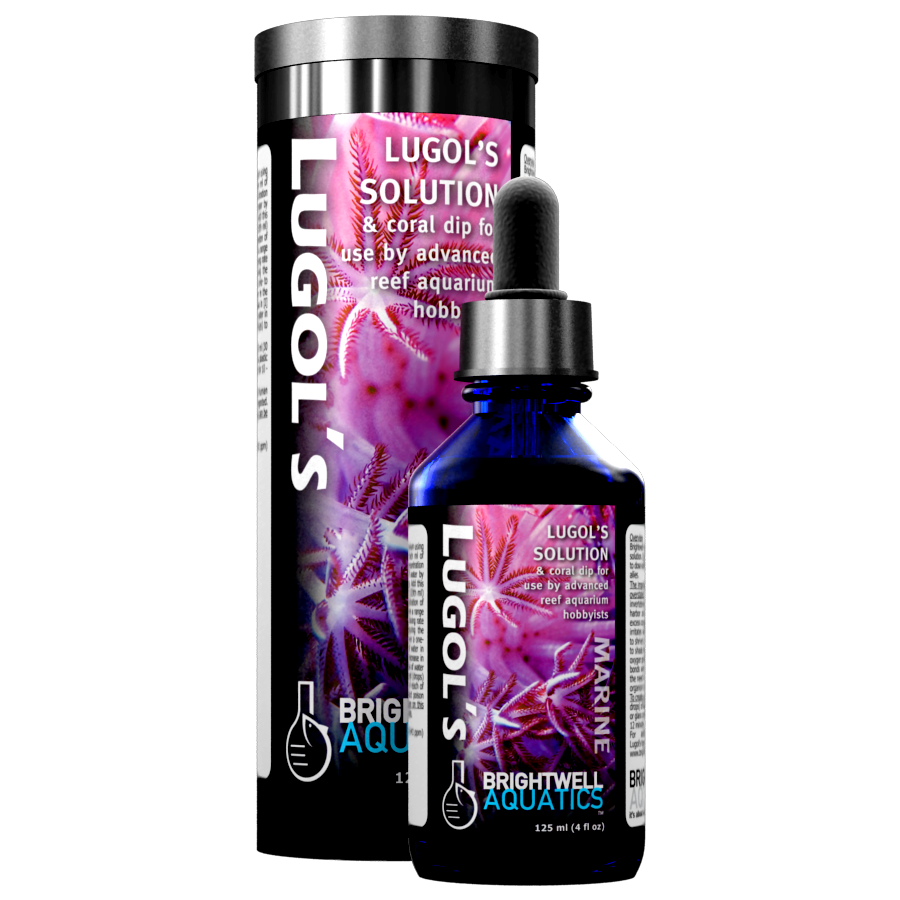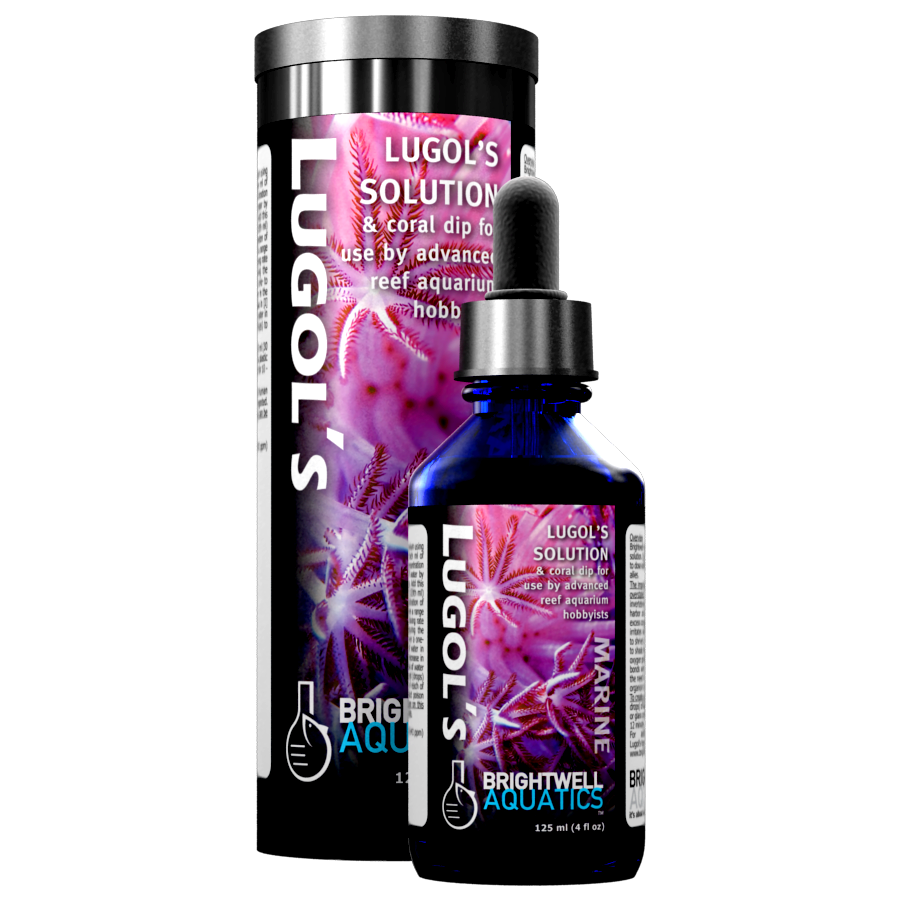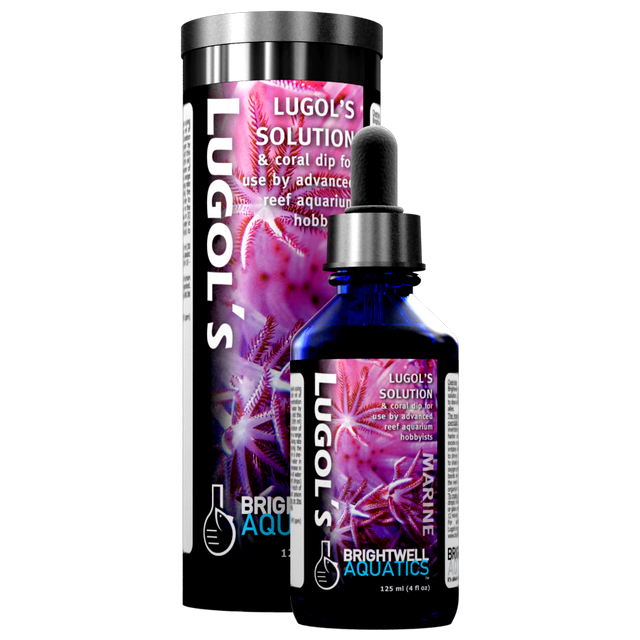Lugol's
Lugol's - 30 ml is backordered and will ship as soon as it is back in stock.
Couldn't load pickup availability
Lugol's Solution
Brightwell Aquatics Lugol's is an extremely powerful iodine/iodide solution. It will raise the iodine concentration of a marine aquarium or reef and it can also be used as a dip for new corals.
Dosing Instructions
Determine the iodine concentration in the aquarium using an accurate test kit before supplementing. Each ml of Brightwell Aquatics Lugol’s will increase the concentration of iodine (“[I]”) in 1 US-gallon (3.785 L) of water by 12 ppm, or approximately 0.6 ppm per drop. Easy Calculations for use in the aquarium: Multiply tank capacity in gallons x ppm increase desired x .07570 = ml of product to add. Example to raise the concentration of iodine in a 100 gallon aquarium by .02 ppm, the calculation is: 100 x .02 x .07570 = 0.15 ml. To get the number of drops required, multiply this number by 20, so this would be 0.15 ml * 20 = 3 drops. (a dropperful is 1 ml or 20 drops).
Coral Dip Instructions
Read your bottle to determine the strength you have. The label on the outer package will give you the ppm that your product will raise a gallon of water. Draw one gallon of aquarium water from your aquarium and use the following calculation to determine how much Lugol's to add.
Easy Calculations for a Dip: 14.4 divided by the ppm per gallon on the label = ml to add to one gallon of tank water in your bucket. If your label says the Lugol's will raise 1 US gallon of water by 12 ppm, the calculation would be 14.4 / 12 = 1.2 ml of Lugol's. So you would add 1.2 ml or a dropperful and then 20% of another dropperful to 1 gallon of tank water that you placed in the bucket. That would also be 1 dropperful plus 4 drops. (a dropperful is 1 ml or 20 drops). Corals may be soaked for 10 to 12 minutes.
Technical Background
The importance of iodine in a reef aquarium cannot be overstated. The presence of iodine is vital to hermatypic invertebrates (i.e., corals, clams, and their allies that harbour zooxanthellae) because it is used to detoxify excess oxygen produced by zooxanthellae. This oxygen irritates sensitive tissue. Corals and clams that appear to shrivel or close under intense lighting are attempting to shade their zooxanthellae crop to reduce the rate of oxygen production. Iodine (as the iodide ion) essentially bonds with oxygen to form non-toxic iodate, relieving the need to shield zooxanthellae and enabling the host organism to open fully.
The predominant form of iodine in seawater is iodide. The natural seawater concentration of all iodine species combined is approximately 0.06 ppm, classifying it as a minor element. Even in this small concentration, iodine is required for the survival of fishes, crustaceans, macroalgae and kelp, and hermatypic invertebrates alike. Iodine binds rapidly with latent organic material and is passively removed by aggressive protein skimming and the use of organic-adsorption products such as activated carbon and specialty resins. The combined biological and chemical depletion of iodine necessitates that its concentration is monitored and the aquarium supplemented as needed. The rate at which iodine is extracted from the water is determined by the stocking density of reef-building livestock, type of lighting, and other biological, physical, and chemical conditions. Once the rate of iodine uptake in the aquarium has been determined, the proper dosing rate of this product can be easily calculated.
Payment & Security
Payment methods
Your payment information is processed securely. We do not store credit card details nor have access to your credit card information.



